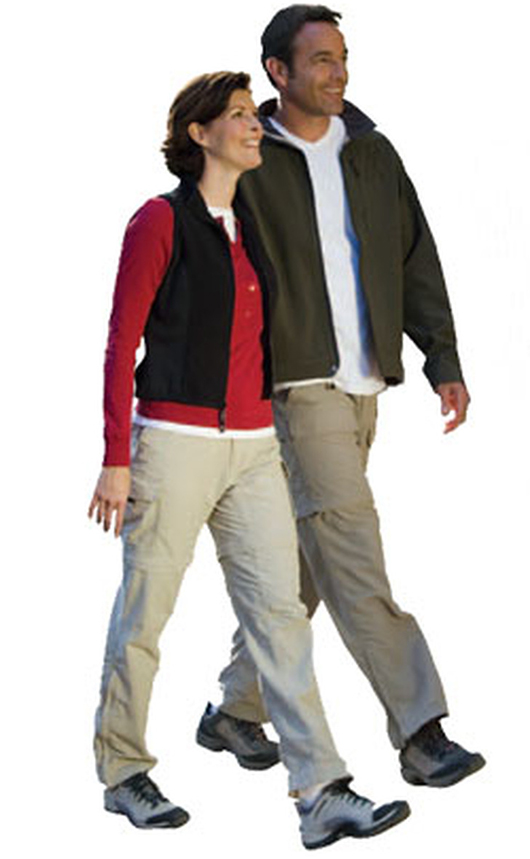Understanding Levels of Compression for Stockings
Jul 20th, 2020
Lymphedema is a serious complication that can arise after mastectomy surgery, especially if you have also had a lymph node removal. It is caused by excess fluid build-up around the incision site and extremities and can lead to infection, cellulitis, and mobility issues.
Compression stockings are a vital medial garment that can reduce the risk of lymphedema in your legs and feet. They come in a wide variety of compression levels to suit different medical conditions. Understanding the levels of compression can help you choose the right stockings for your needs.

What are the Standard Compression Levels for Stockings?
Compression stockings come in five grades that are measured in “millimeters of mercury” (mmHg). This is the same unit of measurement used to assess blood pressure. Each category comes with a corresponding range of compression numbers that indicate the minimum and maximum level of pressure exerted on your legs.
Light: 8-15 mmHg
Light compression stockings are designed for everyday use by any wearer. The gentle pressure is suitable for people suffering from minor swelling from fluid retention, to alleviate aching, fatigued legs, for people with diabetes, and to prevent varicose and spider veins during pregnancy.
Mild: 15-20 mmHg
These support garments offer the shortest compression range of any stockings, and they are effective for treating a variety of minor to moderate medical conditions.
You can wear mild compression stockings to prevent deep vein thrombosis (DVT) during air travel, or when traveling long distances by road. If you are prone to spider veins or venous insufficiency, mild compression stockings can improve blood flow. Athletes can also benefit from 15-20 mmHg stockings to reduce the buildup of lactic acid and enhance their post-workout recovery.
Moderate: 20-30 mmHg
Moderate 20-30 mmHg compression stockings are classified as a medical-grade garment and should be purchased under medical advice from your doctor, although you do not need a prescription to buy a pair.
They are suitable for use by shift workers who spend long hours on their feet such as doctors, nurses, and emergency crews, as well as elite athletes to improve muscular performance.
Moderate compression garments are recommended as the first compression level for individuals prone to lymphedema, and other patients recovering from surgical procedures.
They can also prevent post-thrombotic syndrome (PTS) which is a dangerous secondary condition that often occurs after DVT when a blood clot damages the blood vessel walls or valves. This condition is often permanent as damage to the veins of this kind cannot be repaired.
High: 30-40 mmHg
Also known as firm compression stockings, these Medical Grade II garments are useful for addressing severe cases of lymphedema, DVT, varicose veins, spider veins. They are also suggested for people suffering from increasing venous insufficiency and chronic orthostatic hypotension.
Very High: 40-50 mmHg
40-50 mm Hg compression stockings are the highest level pressure and are only available to patients with a doctor’s prescription. The pressure exerted on your blood vessels can be dangerous for people with certain conditions, so they must only be used under the close supervision of a medical professional.
They are primarily used for wound care and extreme cases of lymphedema.
What is Graduated Compression?
Not all compression stockings are created equal. Look for brands that use graduated compression to improve lymph and blood flow.
Graduated compression means that the stockings are knit so that the firmest pressure is at the foot and gradually gets lighter toward the knee. This allows your circulation to improve up and out of the leg to prevent fluid pooling at the foot.
Juzo Soft Stockings use graduated compression available in both moderate and high-pressure levels. They come in 5 different sizes so you can find the perfect fit and you can find them with or without a silicone border to help the stockings stay up. Choose from six colors to suit your skin tone or match your outfit.

Factors to Consider When Buying Compression Stockings
While compression level is an essential factor to consider when buying medical compression stockings, there are also other features that can impact the effectiveness and comfort of your garment including:
Size
It is important to choose the right size stocking for your leg. Too small and the stocking will apply greater pressure than necessary which can inhibit blood flow. Too large and the compression may be insufficient to address your venous and lymphatic drainage issues.
Ensure you take accurate measurements of your legs at the ankle, the widest part of your calf and knee. Consult the size chart carefully to find the right fit for your body.
Height
Compression stockings come in different heights from knee to thigh length depending on the level of support you need. Thigh-high stockings are ideal as an extra layer during cold weather, while knee socks are suitable for daily wear.
You can also find pantyhose-style stockings with a waist attachment for added comfort and tummy control.
Toe Configuration
Depending on your style and comfort needs, compression stockings are available with either an open or closed-toe configuration. Closed-toe stockings feel the same as regular socks and can be worn in place of your favorite pair under any outfit. Open-toed stockings end either at the ankle or just before the toes; they are perfect for hot weather and allow a better range of movement.
Reinforced Stitching
For stockings at higher compression levels, look for reinforced stitching on the heel and toe to minimize wear and tear for a longer-lasting garment.
The Takeaway
Compression stockings can prevent numerous medical conditions including lymphedema. Before undergoing mastectomy surgery, purchase a pair of compression stockings to reduce your risk and enhance your recovery.
Mastectomyshop.com carries a huge selection of compression garments including stockings, sleeve, and p ost-surgical bras. Browse our online catalog or contact us at (877) 413-2272 to find out more about how compression garments work and to get a recommendation for the right compression stockings for your needs.
